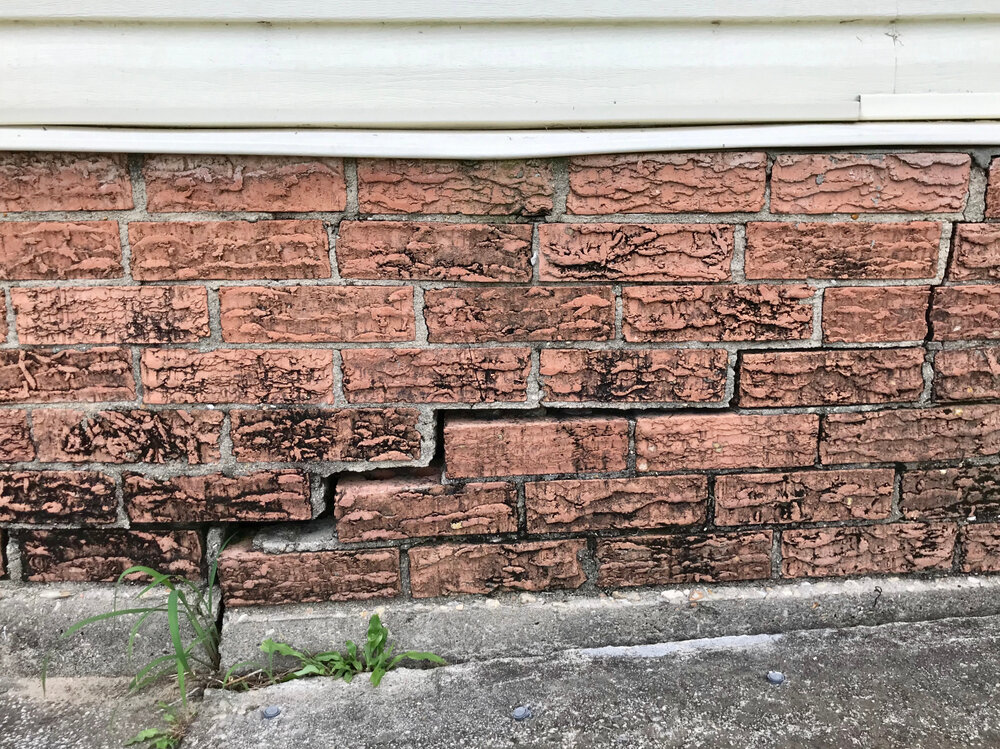
As a Texas homeowner, you’re likely familiar with the unique challenges of maintaining a solid foundation. The region’s expansive clay soil, unpredictable weather patterns, and widespread use of slab foundations all contribute to the heightened risk of foundation water damage.
When water infiltrates your home’s foundation, it can quickly become overwhelming. It threatens your family’s safety, comfort, and the long-term value of your property.
At Dry Force, we’re here to help you better understand the risks and take proactive steps to protect your home. Understanding the risks, causes, warning signs, and solutions of foundation water damage in Texas can help you prevent minor issues from becoming costly repairs.
Table of Contents
Why Foundation Water Damage Is a Major Concern in Texas
Foundations are built to keep your home stable, but Texas homes face conditions that can put that stability at risk. Long dry spells followed by heavy rain create the perfect environment for foundation water damage.
Many homes sit on expansive clay soils that swell when wet and shrink when dry. This constant movement puts stress on slab foundations, and over time, it can lead to cracks, uneven settling, or even structural shifting.
Poor drainage can make the problem even worse. When grading is off or gutters and downspouts are clogged, water can pool next to the foundation, soaking the soil and pushing against it. In some neighborhoods, runoff from nearby properties adds even more water, especially where drainage control is lacking.
With these conditions, your home is more prone to slab leaks and other foundation issues that can be costly and unsafe.
Common Causes of Foundation Water Damage
Your foundation is only as strong as the ground beneath it, and any concerns with drainage, plumbing, or leaks can quickly impact its strength. Understanding the common causes of a wet foundation can help you catch issues before they worsen.
Watch out for these common causes:
- Surface Water – Water pooling around your home causes the soil to expand and push against its foundation.
- Underground Water –When too much water builds up in the soil beneath your home, it can push on the foundation and lead to cracks or shifting.
- Soil Erosion – When soil washes away from the foundation, the slab can shift and crack.
- Weather Changes – Heavy rain or drought can cause the ground to expand or contract, potentially shifting the foundation.
- Plumbing Leaks – Leaking pipes can let water soak into the slab, weakening the foundation over time.
If you notice any of these signs, contact Dry Force right away for professional water damage foundation repair.
Warning Signs of Foundation Water Damage
Foundation problems often begin quietly and can go unnoticed until serious damage occurs. However, your home may show early warning signs if water is putting stress on the foundation. Catching these clues early can help you avoid costly repairs down the road.
Watch for the following signs of water damage to your foundation:
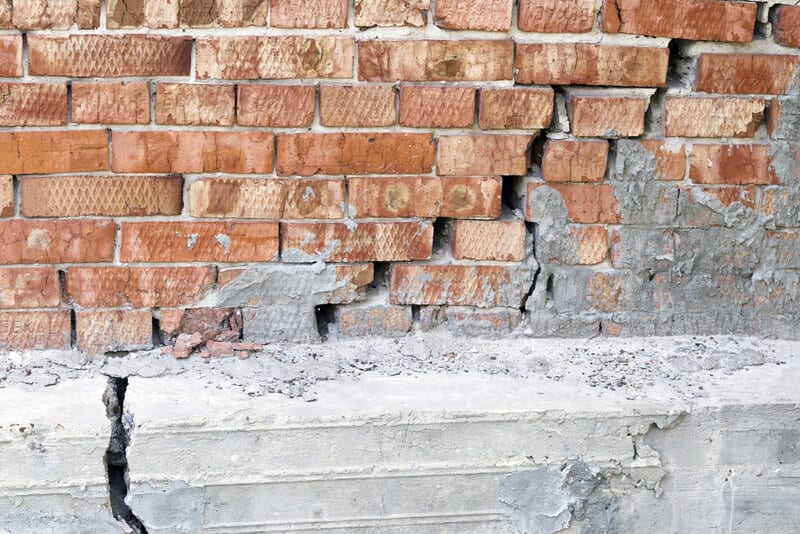
Cracks in the Foundation
Small hairline cracks are usually not a concern, but wider, horizontal, or stair-step cracks can signal serious foundation movement. These often result from shifting soil or water pressure around the foundation.
Wall Discoloration
Yellow stains, brown patches, or white chalky residue on walls can be signs of a wet foundation. These marks often appear when moisture seeps through the walls and brings minerals or contaminants with it.
Mold or Mildew
Seeing or smelling mold around your home suggests ongoing moisture problems. Mold growth means water is getting in and not drying out properly.
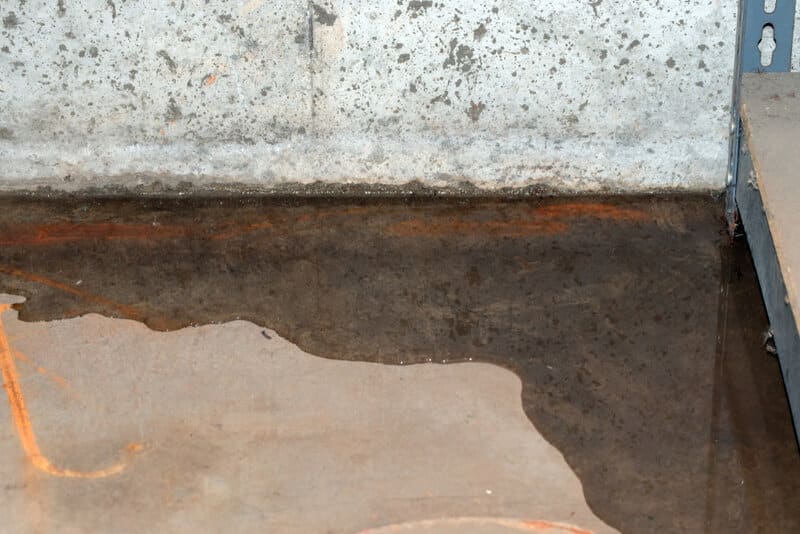
Excess Moisture or Dampness
A damp basement, crawlspace, or floor isn’t just uncomfortable—it can damage materials and lead to mold growth. Constant moisture is often a sign of water problems at the foundation level.
Pungent or Musty Smell
Musty or earthy odors coming from below your home may indicate mold or stagnant water. These smells are often one of the first noticeable signs of hidden moisture issues.
Prevention & Mitigation Strategies
Slab foundations are particularly susceptible to water damage; however, there are practical steps you can take to prevent or reduce the impact on your property. Consistent maintenance and early detection can save thousands of dollars in repairs.
Here are practical steps to protect your home:
- Inspect drainage regularly: Make sure your yard slopes away from the house, and check gutters and downspouts for clogs or leaks.
- Schedule moisture testing: Professional moisture mapping services can detect areas where water is pooling near or under your foundation.
- Get a thermal imaging inspection: This service reveals hidden plumbing leaks or water intrusion that isn’t visible to the naked eye.
- Maintain plumbing systems: Have a licensed plumber check for leaks, especially in older homes with slab foundations.
- Control landscaping irrigation: Avoid overwatering near the foundation and choose plants with moderate water needs.
- Install a French drain or sump system if needed: These help redirect excess water away from the foundation during heavy rains.
Taking these preventative steps not only lowers the risk of foundation water damage but also helps you catch problems early. This effectively saves you time, money, and stress in the long run.
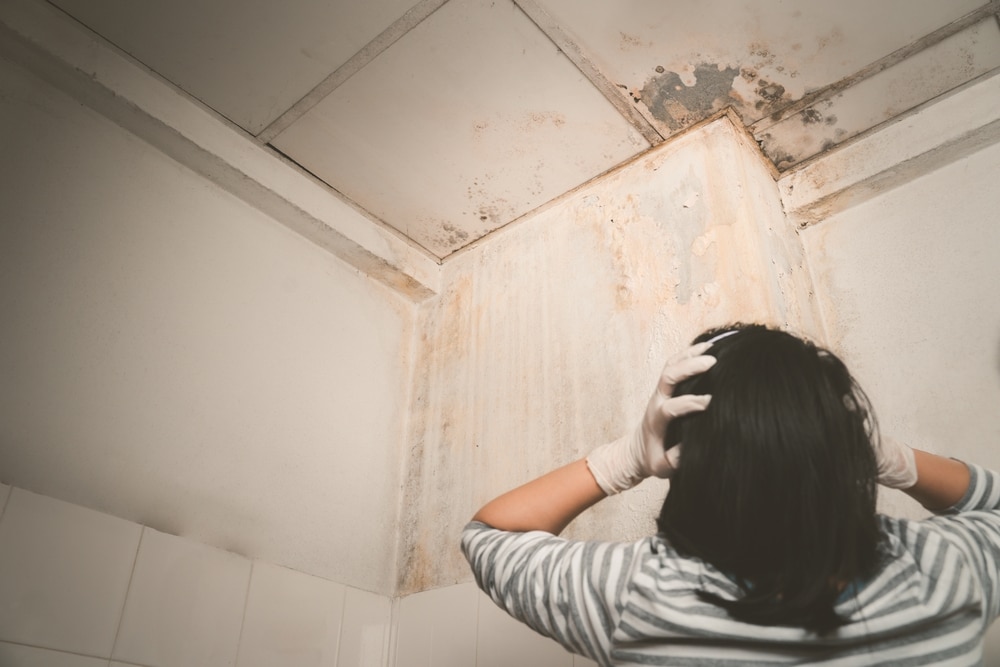
What To Do When You See Signs
If you notice cracks, dampness, or other warning signs of water damage to your foundation, don’t worry. Acting quickly will help you get the problem resolved quickly to prevent further harm.
Here’s what to do:
- Reach Out to a Foundation Repair Specialist
Connect with a trusted foundation repair expert to evaluate the damage. They’ll determine whether the issue stems from structural movement, plumbing leaks, or poor drainage and provide a clear plan for repairs. - Contact Your Home Insurance Provider
Speak with your insurance agent to review your policy and explore potential coverage for the damage. Be ready to share photos and notes you’ve taken of any cracks, wet spots, or visible deterioration. - Call a Water Damage Restoration Company
Bring in a professional restoration team to handle immediate concerns like water removal, drying, and mold prevention. This step helps limit further damage.
Taking prompt and coordinated action is the best way to protect your home’s foundation and prevent costly repairs down the road.
The Cost of Ignoring Foundation Water Damage
Foundation water damage is a serious and costly problem that can significantly decrease your home’s value. If left untreated, foundation issues can lead to:
- Structural instability and uneven floors
- Doors and windows that don’t close properly
- Cracks in walls and ceilings inside your home
- Plumbing damage caused by shifting pipes
What begins as a manageable repair can quickly escalate into major reconstruction if ignored. In extreme cases, the damage may become so severe that foundation replacement is necessary—one of the most expensive repairs a homeowner can face.
Taking action early not only lowers repair costs but also safeguards your home’s comfort, safety, and long-term value.
Protect Your Home Before Damage Spreads
Foundation water damage is a serious issue. But with the proper knowledge, regular inspections, and prompt action, it’s one you can get ahead of.
Dry Force’s team of IICRC-certified technicians uses advanced tools such as moisture mapping and thermal imaging inspection to detect and address foundation problems before they escalate.
If you’ve spotted cracks, dampness, or other signs of trouble, don’t wait. Contact us today for expert water damage restoration in Dallas. We’ll help you protect your home and restore your peace of mind.
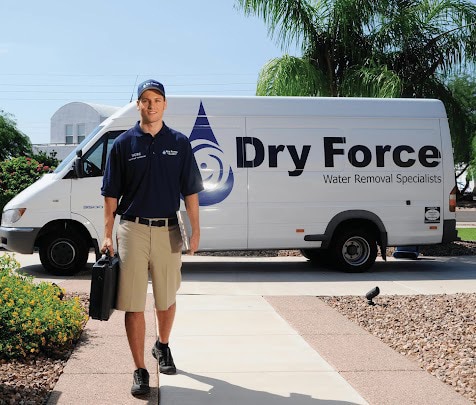
Frequently Asked Questions
Will homeowners’ insurance cover foundation water damage?
It depends on the cause of damage. Many insurance policies do not cover foundation water damage caused by gradual issues like poor drainage or soil expansion. However, damage from sudden and accidental events, such as a burst pipe, may be covered. Always review your policy and speak with your insurance provider to confirm coverage details.
How long does it take for water to damage a foundation?
Damage can begin within days if water is pooling against your foundation. The longer water remains in contact with the foundation, the higher the risk of cracking, shifting, and mold growth.
Can I fix a water-damaged foundation myself?
Minor maintenance, such as clearing gutters or adjusting grading, can be done yourself. However, structural repairs or moisture mitigation should always be handled by professionals. Without the right tools and expertise, you risk making the problem worse or overlooking hidden damage.
